Responsible Lawn Care: Protection for Your Creek or Lake
What Happens to Nutrients in Water?
The extremely high level of P often found in lawns of neighborhoods are likely the
result 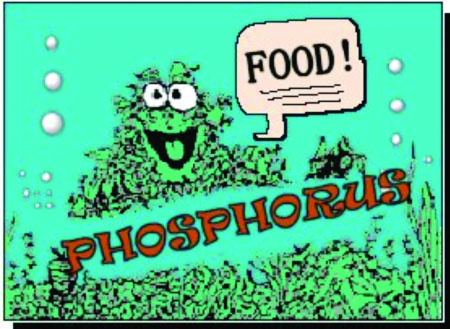 of residents frequently applying P-fertilizer when it was not needed.
of residents frequently applying P-fertilizer when it was not needed.
When it rains, excess fertilizer from lawns may be washed through streets and storm drains to nearby lakes and streams. Plant nutrients that reach lakes and streams. This starts a process called eutrophication, or over production of algae and aquatic weeds. Such "blooms" of algae can use up the oxygen in the water. Extreme cases can lead to fish kills.
The eutrophication process is very difficult, and expensive, to stop. Once excess
 nutrients enter a lake, they cycle between bottom sediments and the water. This continues
long after the source of the nutrients has been eliminated. Like many other problems,
the best cure is prevention.
nutrients enter a lake, they cycle between bottom sediments and the water. This continues
long after the source of the nutrients has been eliminated. Like many other problems,
the best cure is prevention.
Nutrient Pollution Prevention
To minimize water quality problems, it is important to get a soil test and apply fertilizer
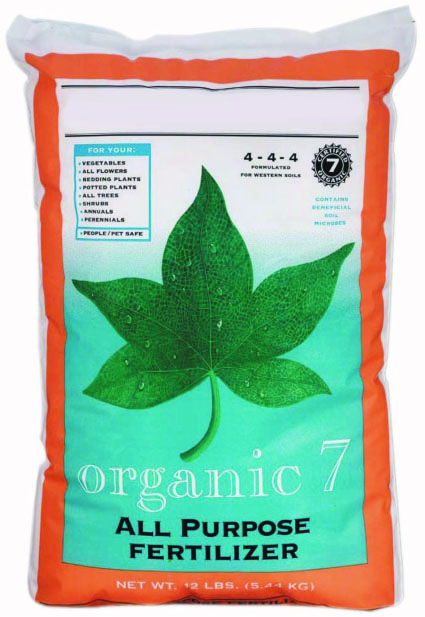 at the proper time and rate, specific to the type of plant and its individual needs.
Low P or no P fertilizers should be used if soil test shows P is adequate in the soil.
at the proper time and rate, specific to the type of plant and its individual needs.
Low P or no P fertilizers should be used if soil test shows P is adequate in the soil.
For more information about proper soil fertilization, contact your local County Office of the OSU Cooperative Extension Service. Ask for the Oklahoma Homeowner's Handbook for Soil and Nutrient Management E-1003 or OSU Soil Test Interpretation Fact Sheet PSS-2225.
Too Much Lawn Fertilizer Causes Water Pollution
Most people think of adding a little extra fertilizer to their own yard or land-scape
as a  pollution source. However, when a whole community adds that little extra, the cumulative
effect is a very real threat to water quality. A recent study of urban lawns in Stillwater
Oklahoma, suggests that may be the case.
pollution source. However, when a whole community adds that little extra, the cumulative
effect is a very real threat to water quality. A recent study of urban lawns in Stillwater
Oklahoma, suggests that may be the case.
Fertilize Responsibly
All plants, including grasses, need 16 essential nutrients. Most of the are plentiful
in the 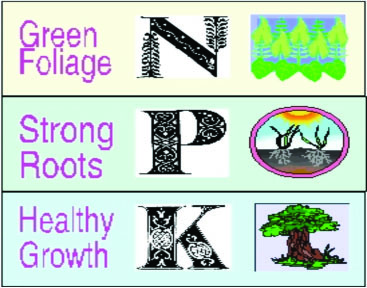 soil. Nitrogen (N), phosphorus (P), and potassium (K), however, may be depleted by
removing grass clippings from a lawn or harvesting a garden and soils cannot provide
enough. For this reason, most commercial fertilizers contain all three of these nutrients.
soil. Nitrogen (N), phosphorus (P), and potassium (K), however, may be depleted by
removing grass clippings from a lawn or harvesting a garden and soils cannot provide
enough. For this reason, most commercial fertilizers contain all three of these nutrients.
Nitrogen, a water soluble nutrient responsible for lush, green color in plants and
grasses, is generally depleted first. The problem is that fertilizers high in N may
contain more P than a lawn or garden needs. As a result many  lawns and gardens build up P in the soil, becoming the source of pollution.
lawns and gardens build up P in the soil, becoming the source of pollution.
Soil Testing Gets it Right
A soil test measures the ability of soil to provide nutrients to plants. This analysis
takes some of the guess work out of fertilizer application. 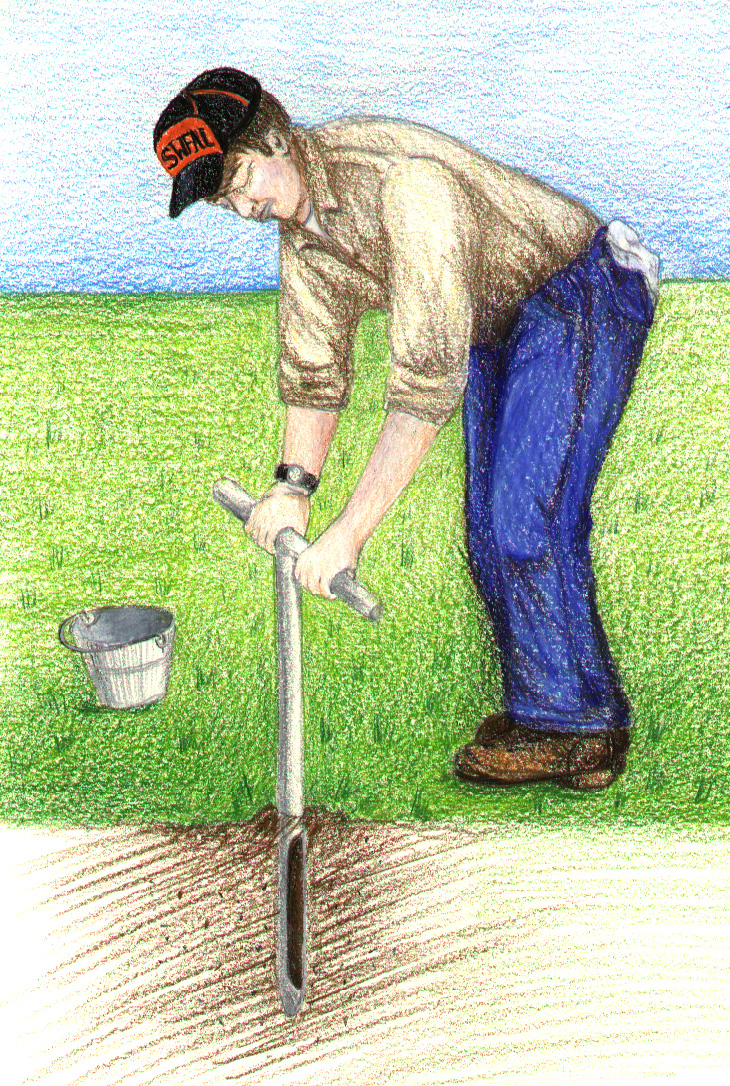
Soil test results come with recommendations for the type and quantity of nutrients needed. The table below lists recommended soil test levels to support most Bermuda grass lawns.
| Recommended Soil Test Values | ||
|---|---|---|
| pH | 5.5-7.0 | |
| Nitrogen (N) | 21-40 lb/ac | |
| Soil Test P Index | 65-120 lb/av | |
| Soil Test K Index | 250-350 lb/ac |
Professional Help
A soil test is a good idea even if a professional service manages your landscape.
Generally, professional lawn services are good for water quality. They split 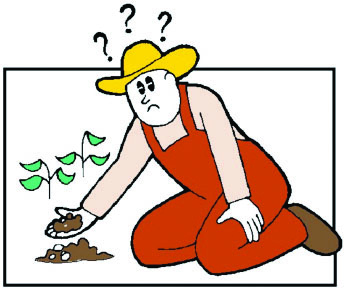 fertilizer applications over several visits, reducing the potential for excess nutrients
to run off to lakes and creeks.
fertilizer applications over several visits, reducing the potential for excess nutrients
to run off to lakes and creeks.
However, landscape businesses may treat all lawns the same. They don't usually do a soil test and modify the fertilizer blend unless the customer expressly asks for it.
Individual lawns have individual needs. Requesting a soil test can help you get more personalized lawn care service and protect the environment.
The Stillwater Creek Project
In August 2003, 122 lawns from two Stillwater, Oklahoma neighborhoods had lakes that were green with algae. The study showed many lawns were over-fertilized, particularly with respect to P. In fact 61 percent were above the recommended P-value, with 18 percent over 300 which is considered excessive!
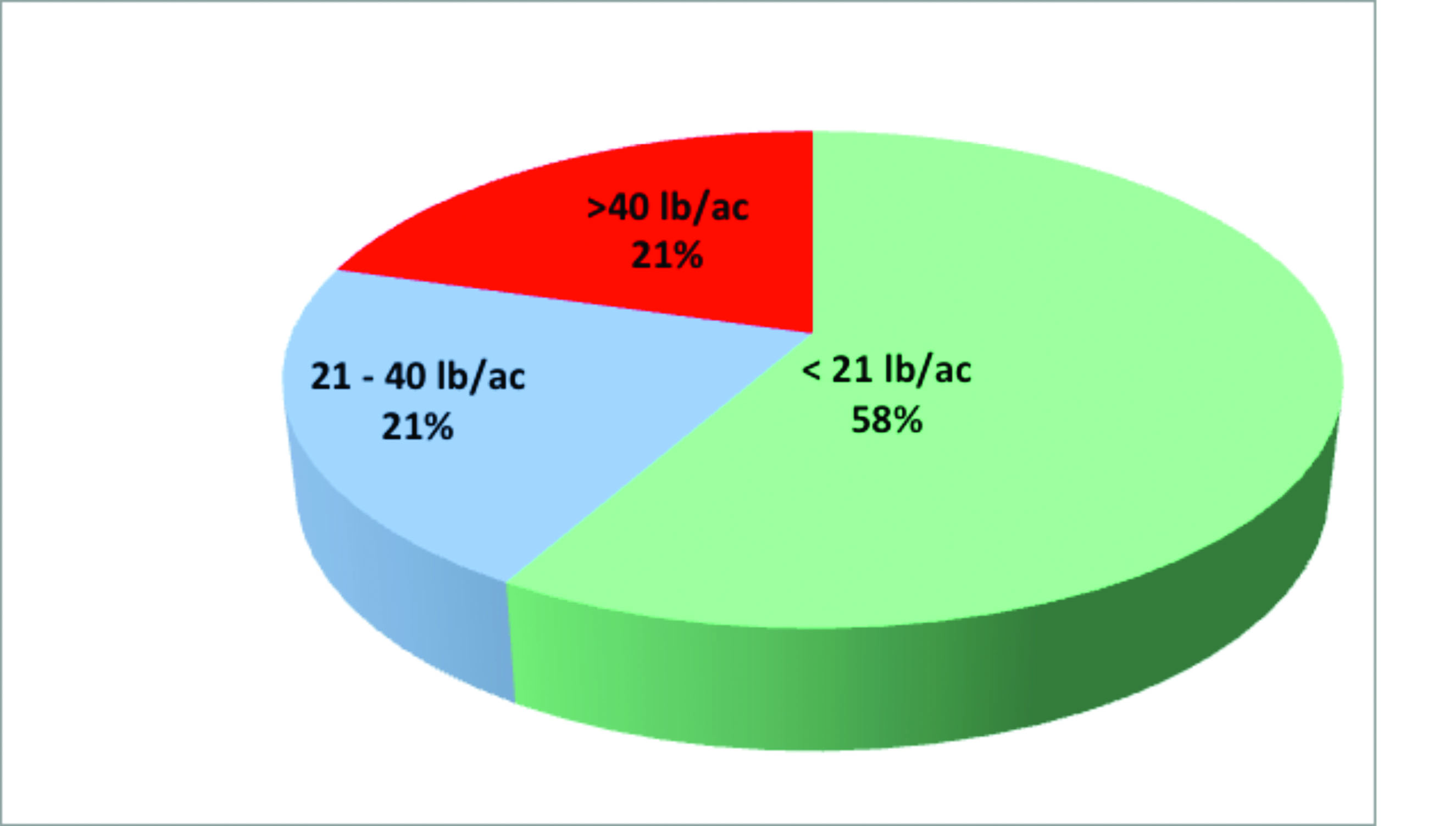
Soil nitrate-N distribution
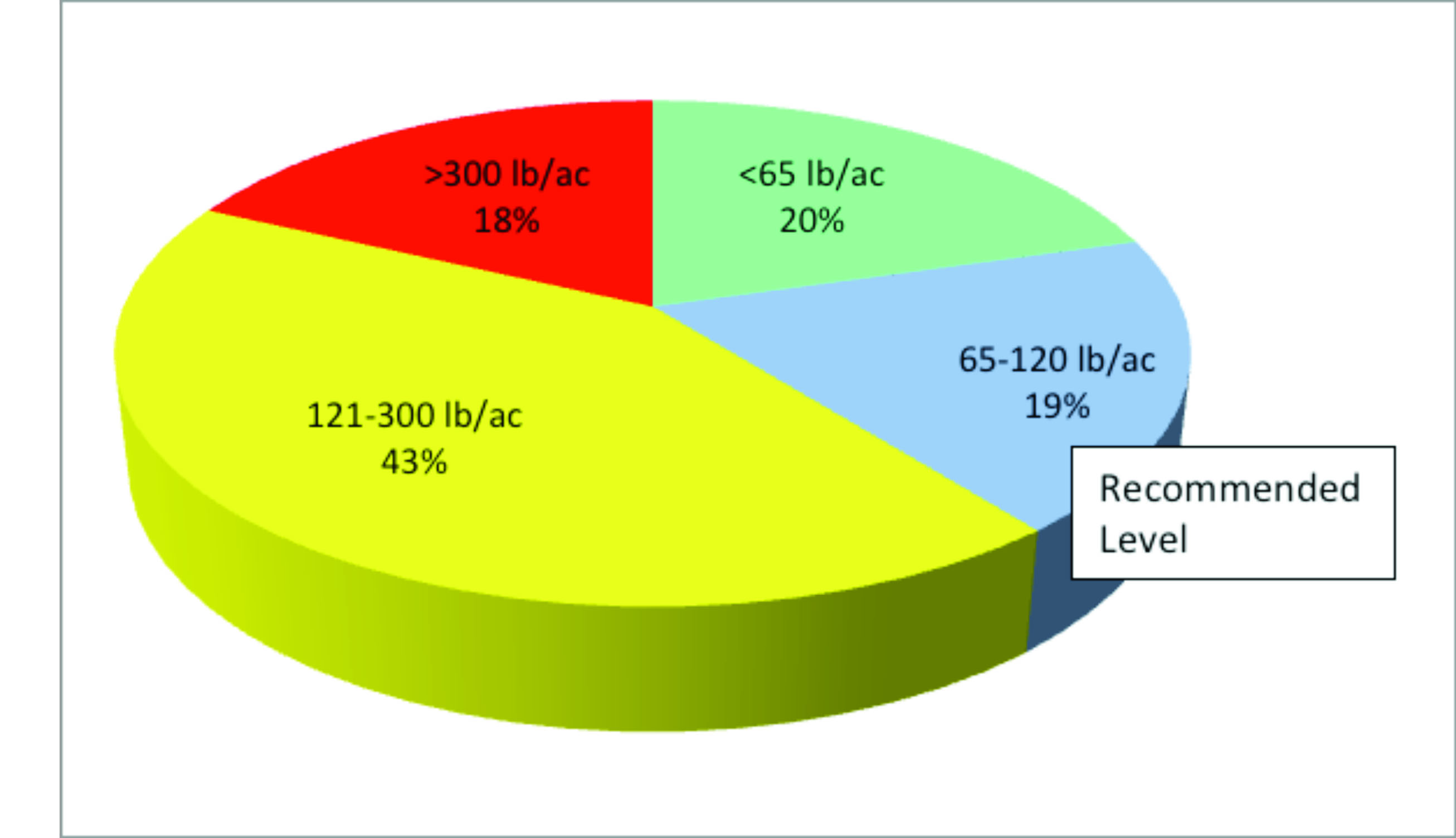
Soil Test P distribution
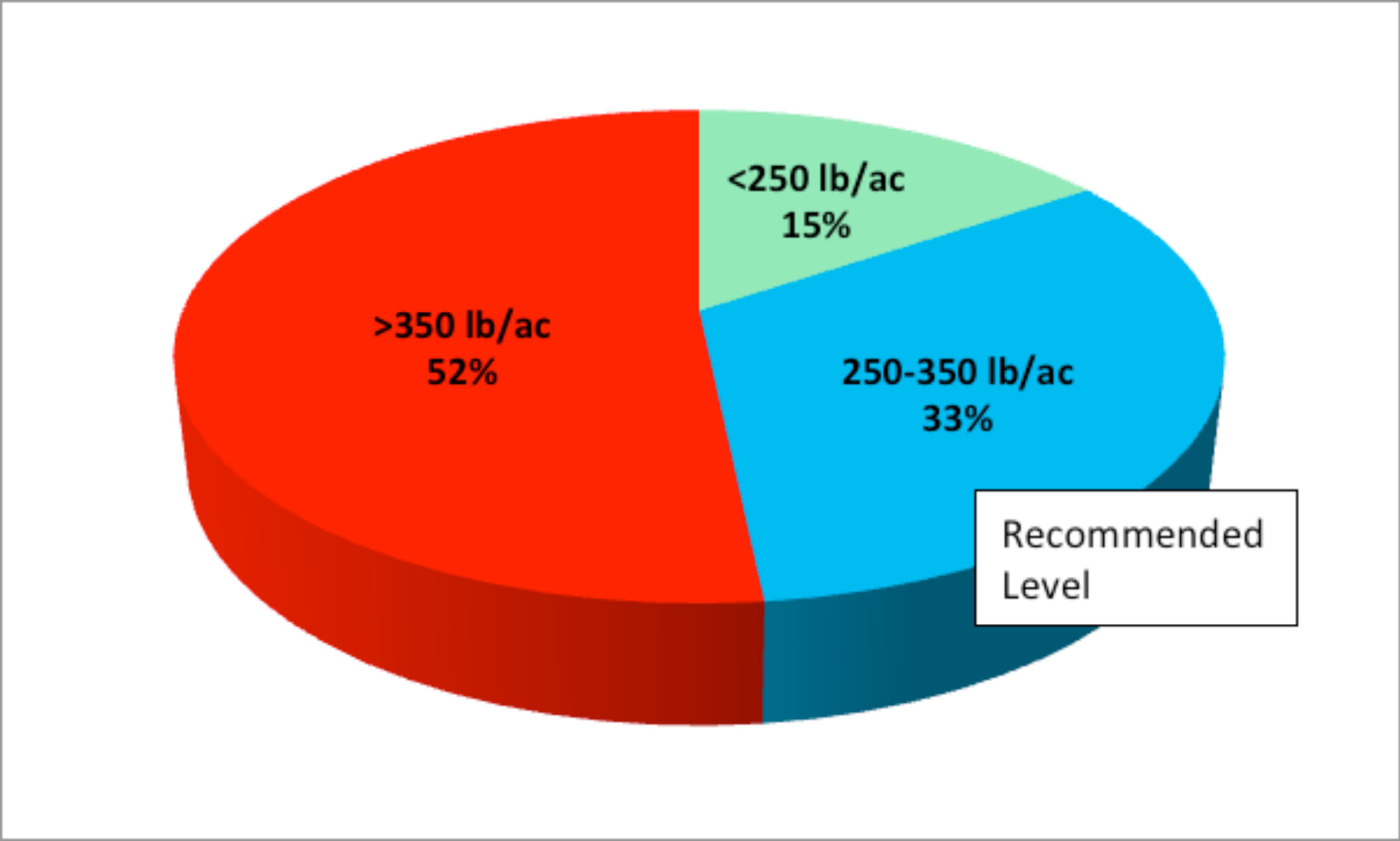
Soil Test K distribution
